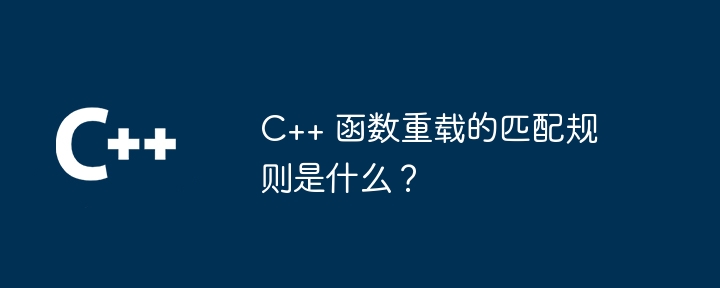The void operator is used in JavaScript to evaluate the value of an expression as undefined. Its usage includes: suppressing function return values, preventing unexpected behavior, checking whether the expression is "truthy", creating implicit conversions, and has higher priority. Low, not recommended for general use.

JavaScript: void puzzle: A comprehensive guide
What is void?
void is an operator in JavaScript that evaluates an expression to undefined. Unlike other operators, void does not affect the execution of the expression.
Usage
void The operator can only be used with one operand. The syntax is as follows:
void expression;
where expression is the expression to be evaluated as undefined.
Practical cases
The following are some practical cases of void operators:
- Suppression function Return value of the call:
void myFunction(); // myFunction 返回一个值,但不会使用它
- Prevent unexpected behavior:
let x = void (y ?? 0); // 如果 y 为 null 或 undefined,则 x 将为 undefined,否则为 y
- Check expression Whether it is "truthy":
if (!void expression) {
// 如果 expression 为 truthy,则不会执行此代码块
}- Create implicit conversion:
const number = new Number(42); // 创建一个 Number 对象 const primitive = void number; // 获取原始值 42
Notes
-
voidoperator does not throw an exception even if the operand is an invalid expression. The -
voidoperator has lower precedence than most other operators. -
voidMainly used in special situations, not recommended in general.
Other examples
const result = void (prompt("Please enter your name:") || "Unknown"); // 获取用户输入,或使用 "Unknown" 作为默认值let value;
if (void value) {
// 当 value 为 undefined 或 null 时,执行此代码块
}The above is the detailed content of Solving JavaScript:void conundrums: A comprehensive guide. For more information, please follow other related articles on the PHP Chinese website!
 c语言怎么算除法Apr 13, 2024 pm 09:12 PM
c语言怎么算除法Apr 13, 2024 pm 09:12 PMC 语言中,除法运算符 / 的行为取决于操作数的数据类型:整数除法:操作数为整数时,进行整数除法,结果向下取整。浮点数除法:操作数为浮点数时,进行浮点数除法,结果为浮点数。类型转换:一个操作数为整数,另一个不是时,整数会隐式转换为浮点数,然后进行浮点数除法。除数为 0:除数为 0 时产生数学误差。取模运算:使用 % 运算符进行取模运算,而非除法取模。
 C++ 函数重载的匹配规则是什么?Apr 27, 2024 am 08:27 AM
C++ 函数重载的匹配规则是什么?Apr 27, 2024 am 08:27 AMC++函数重载匹配规则如下:匹配调用中参数数量和类型。参数顺序必须一致。constness和引用的修饰符必须匹配。可使用默认参数。
 一起来探索隐式类型转换的常见应用场景!Jan 11, 2024 pm 04:45 PM
一起来探索隐式类型转换的常见应用场景!Jan 11, 2024 pm 04:45 PM让我们一起探讨隐式类型转换的常见应用场景!导言:在编程语言中,隐式类型转换是一种自动执行的数据类型转换过程。在一些编程语言中,这种转换是隐含进行的,无需显式地告诉编译器或解释器进行转换。隐式类型转换在编程中拥有广泛的应用场景,本文将针对其中一些常见的应用场景进行讨论。数值计算中的隐式类型转换在数值计算中,经常需要进行不同类型的数据之间的运算。当不同类型的数据
 PHP 函数参数类型有哪些?Apr 10, 2024 pm 04:21 PM
PHP 函数参数类型有哪些?Apr 10, 2024 pm 04:21 PMPHP函数参数类型包括标量类型(整数、浮点数、字符串、布尔值、空值)、复合类型(数组、对象)和特殊类型(回调函数、可变参数)。函数可自动转换不同类型参数,但也可通过类型声明强制特定类型,以防止意外转换并确保参数正确性。
 mysql中*是什么意思Apr 26, 2024 am 07:21 AM
mysql中*是什么意思Apr 26, 2024 am 07:21 AMMySQL 中的星号 (*) 表示“所有”,具有不同用法:选择所有列选择所有行JOIN 表LIKE 子句的通配符REGEXP 子句的量词隐式类型转换
 PHP 中是否存在隐式转换函数返回值的类型?Apr 15, 2024 am 10:48 AM
PHP 中是否存在隐式转换函数返回值的类型?Apr 15, 2024 am 10:48 AM是的,PHP支持在函数返回值时隐式转换其类型:默认情况下,函数返回值类型不会被隐式转换。在某些情况下,PHP可能需要转换返回值类型以兼容其他操作。例如,一个返回字符串的函数可以隐式转换为整数。隐式类型转换可能会导致意外后果,因此应谨慎使用。
 为什么将“interface{}”转换回切片会导致额外的堆分配?Feb 12, 2024 pm 10:15 PM
为什么将“interface{}”转换回切片会导致额外的堆分配?Feb 12, 2024 pm 10:15 PMfuncbenchmarkpool(b*testing.b){b.reportallocs()p:=sync.pool{new:func()interface{}{returnmake([]byte,1024)}}fori:=0;i
 深入理解Go语言的数据类型Apr 08, 2024 am 08:15 AM
深入理解Go语言的数据类型Apr 08, 2024 am 08:15 AMGo语言的数据类型决定了变量可存储的数据类型和操作,包括基本数据类型(布尔、整数、浮点数、复数、字符串、rune、字节)和复合数据类型(数组、切片、映射、结构体、接口)。Go语言支持隐式和显式类型转换,可使用语法typecastedValue:=type(value)显式转换。


Hot AI Tools

Undresser.AI Undress
AI-powered app for creating realistic nude photos

AI Clothes Remover
Online AI tool for removing clothes from photos.

Undress AI Tool
Undress images for free

Clothoff.io
AI clothes remover

AI Hentai Generator
Generate AI Hentai for free.

Hot Article

Hot Tools

PhpStorm Mac version
The latest (2018.2.1) professional PHP integrated development tool

DVWA
Damn Vulnerable Web App (DVWA) is a PHP/MySQL web application that is very vulnerable. Its main goals are to be an aid for security professionals to test their skills and tools in a legal environment, to help web developers better understand the process of securing web applications, and to help teachers/students teach/learn in a classroom environment Web application security. The goal of DVWA is to practice some of the most common web vulnerabilities through a simple and straightforward interface, with varying degrees of difficulty. Please note that this software

SecLists
SecLists is the ultimate security tester's companion. It is a collection of various types of lists that are frequently used during security assessments, all in one place. SecLists helps make security testing more efficient and productive by conveniently providing all the lists a security tester might need. List types include usernames, passwords, URLs, fuzzing payloads, sensitive data patterns, web shells, and more. The tester can simply pull this repository onto a new test machine and he will have access to every type of list he needs.

Safe Exam Browser
Safe Exam Browser is a secure browser environment for taking online exams securely. This software turns any computer into a secure workstation. It controls access to any utility and prevents students from using unauthorized resources.

MinGW - Minimalist GNU for Windows
This project is in the process of being migrated to osdn.net/projects/mingw, you can continue to follow us there. MinGW: A native Windows port of the GNU Compiler Collection (GCC), freely distributable import libraries and header files for building native Windows applications; includes extensions to the MSVC runtime to support C99 functionality. All MinGW software can run on 64-bit Windows platforms.






